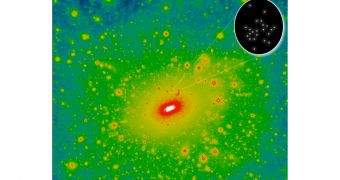Everyone knows that galaxies are huge. Our own, which isn't particularly big, has hundreds of billions of stars. And there are hundreds of billions of galaxies.
However, some are quite small. The smallest, in fact, has just been measured by scientists at the University of California Irvine.
Using the W. M. Keck Observatory in Hawaii, astronomers looked at Segue 2, a tiny dwarf galaxy, and determined that it held about 1,000 stars with only little dark matter among them, holding it all together.
Segue 2 is one of the many dwarf galaxies that hovers our own, gigantic by comparison, Milky Way. All of its stars put together are only 900 times or so as bright as our sun.
While it's incredibly small, astronomers are convinced that it is a galaxy in its own right and not just a star cluster. The dark matter that engulfs and surrounds the galaxy is what makes the difference.
A galaxy can only be called so if its components, the stars, gas, and dark matter, are held together by gravity. That is the case with Segue 2. The findings were published in the The Astrophysical Journal.

 14 DAY TRIAL //
14 DAY TRIAL //